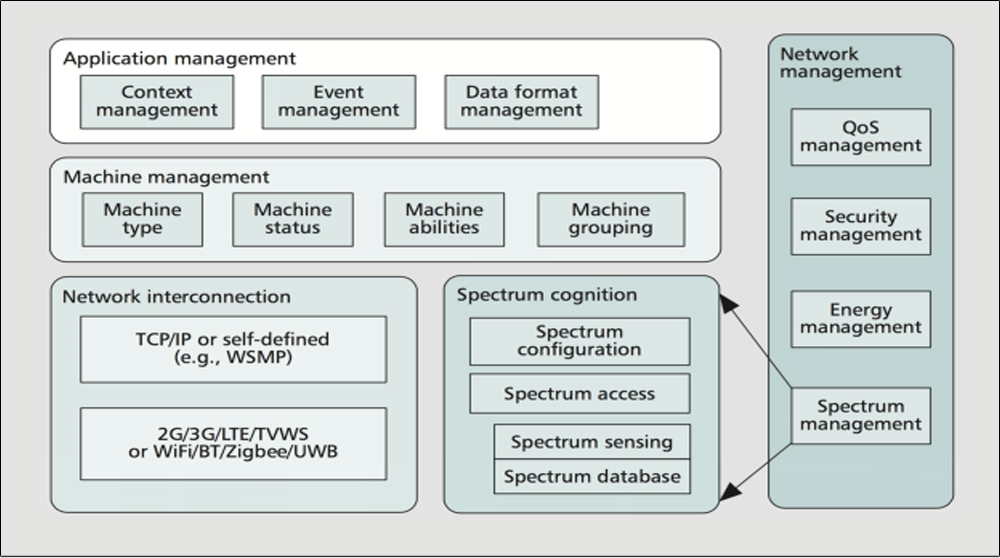■ Home M2M Networks and Multimedia Services
It is envisioned that home networks will shift from current machine-to-human (M2H) communications to the machine-to-machine (M2M) paradigm with the rapid penetration of embedded devices in home surroundings. In our work, we first identify the fundamental challenges in home M2M networks. Then we present the architecture of home M2M networks decomposed into three subareas depending on the radio service ranges and potential applications. Finally, we focus on QoS management in home M2M networks, considering the increasing number of multimedia devices and growing visual requirements in a home area. Three standards for multimedia sharing and their QoS architectures are outlined. Cross-layer joint admission and rate control design is reported for QoS-aware multimedia sharing. This proposed strategy is aware of the QoS requirements and resilience of multimedia services. Illustrative results indicate that the joint design is able to intelligently allocate radio bandwidth based on QoS demands in resource- constrained home M2M networks.

Fig. 1 Home M2M network architecture.

Fig. 2 Structure of the cognitive gateway in home M2M network.
■ Internet-of-Things (IoT) Services Over Cognitive M2M Networks
Based on cognitive radio technology, we propose a new Machine-to-Machine (M2M) communications paradigm, namely Cognitive M2M (CM2M) communications, for the pervasive machine-type services of Internet-of-Things (IoT). We first motivate the use of cognitive radio technology in M2M communications from different point of views, including technical, applications, industry support, and standardization perspectives. Then, our CM2M network architecture and cognitive machine model are presented and the CM2M systems coexistence in TV white spaces is discussed. After that, a CM2M communications architecture for the smart grid is presented, for which we also propose an energy-efficiency driven spectrum discovery scheme. Numerical results demonstrate significant energy saving and the reliability in supporting data transmissions in the smart grid.

Fig. 3 Applications of CM2M communications.

Fig. 4 Proposed model of a cognitive machine.
■ Scalable MAC Protocol for Heterogeneous M2M Networks
A robust and resilient medium access control (MAC) protocol is crucial for numerous machine-type devices to concurrently access the channel in a machine-to-machine (M2M) network. Simplex (reservation- or contention-based) MAC protocols are studied in most literatures, which may not be able to provide a scalable solution for M2M networks with large number of heterogeneous devices. In our work, a scalable hybrid MAC protocol, which consists of a contention period and a transmission period, is designed for heterogeneous M2M networks. In this protocol, different devices with preset priorities (hierarchical contending probabilities) first contend the transmission opportunities following the convention-based -persistent carrier sense multiple access (CSMA) mechanism. Only the successful devices will be assigned a time slot for transmission following the reservation-based time- division multiple access (TDMA) mechanism. If the devices failed in contention at previous frame, to ensure the fairness among all devices, their contending priorities will be raised by increasing their contending probabilities at the next frame. To balance the tradeoff between the contention and transmission period in each frame, an optimization problem is formulated to maximize the channel utility by finding the key design parameters: the contention duration, initial contending probability, and the incremental indicator. Analytical and simulation results demonstrate the effective- ness of the proposed hybrid MAC protocol.

Fig. 5 Illustration of the proposed MAC protocol.

Fig. 6 Performance evaluation in terms of utility and packet drop ratio.





